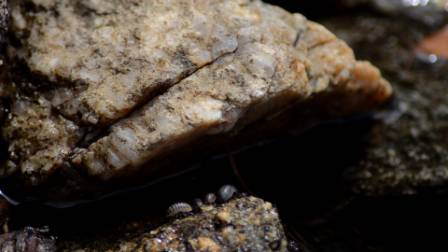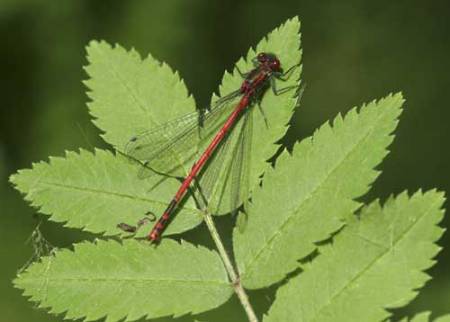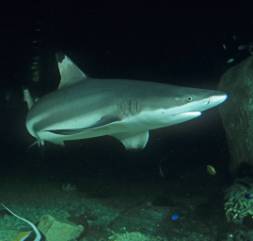Recently we were joined by American filmmaker and writer Erin Espelie who was in London to show her film True Life Adventure at BFI London Film Festival. We hosted the second ever screening of the film in Nature Live.
True Life Adventure highlights the communities of insects found in and around freshwater streams, from stone fly larvae emerging from the water to spiders hoping to catch a meal in their web. Erin filmed the footage in less than two hours in an area of just 3.25 square feet on a single day in June, reminding us of the diversity of life that can be found on our doorstep.
A still from Erin's film. Woodlice shelter under a rock.
Erin was joined by David Urry who works in the Angela Marmont Centre at the museum. He had been for a pond dip that morning and brought along the creatures that he found. Even in October the pond is teeming with life, from tiny water fleas to small snails to long leeches.
Even in October there is lots of life in the Wildlife Garden pond. The small red creatures are water fleas or daphnia.
Most of the animals in the pond are in a constant battle to survive. David talked us through some of the adventures that the animals in the pond undergo every day such as the fearsome damselfly nymphs which prey on aquatic organisms using their extendable jaws. Damselflies are similar to dragonflies and live as nymphs in ponds or streams for most of their lives, shedding their skin when it becomes too tight as they grow.
Large red damselfly in the museum's Wildlife Garden. Photographed by Derek Adams.
After about a year (but it can be longer) the damselfly nymph climbs out of the water and clings to a leaf or twig. Its body dries and after an hour or so its skin begins to crack and the adult damselfly wriggles out complete with fully-formed wings. The adult damselfly only survives for a few weeks and in this time it attempts to find a mate and avoid being eaten.
Children getting a closer look at pondlife after the event.
David brought along some OPAL Water Survey packs so that the audience could explore the life in their local pond or stream. By taking part in the OPAL water survey you can help scientists learn more about the water quality of our lakes and ponds.
If you weren’t able to attend the event you can download a pack here.







